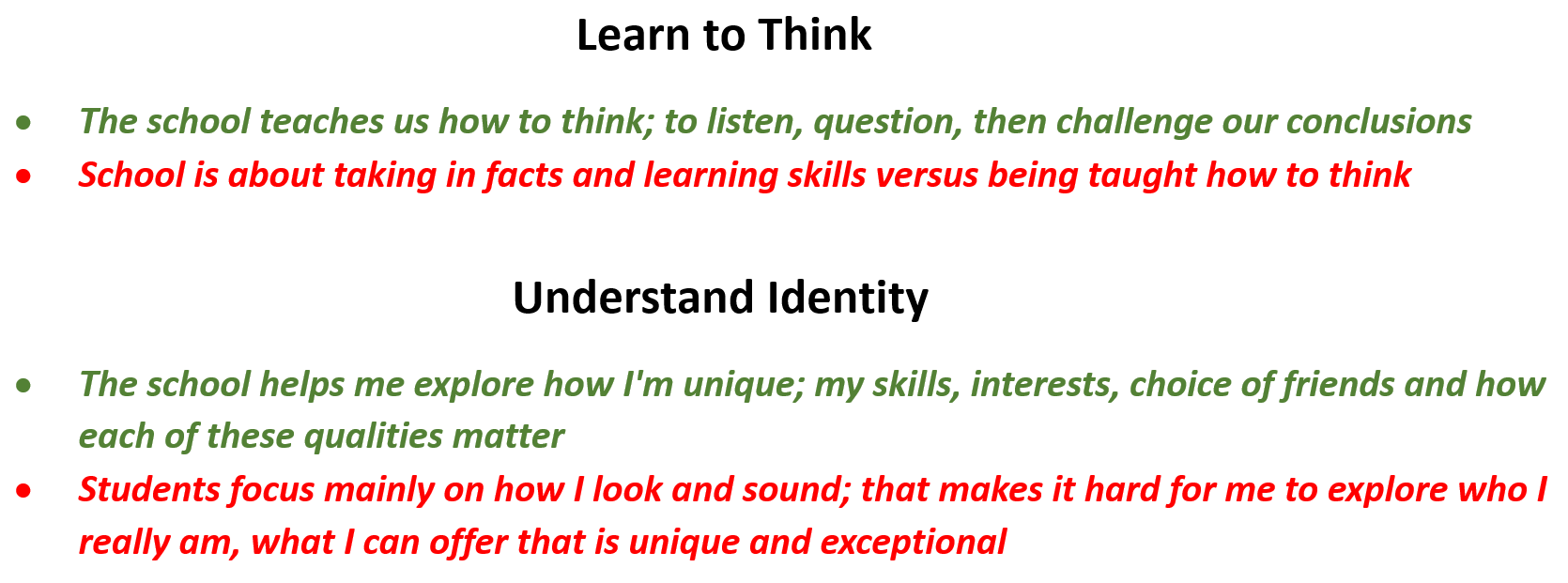Teaching Identity and Learning to Think in Middle School
The Learn to Think and Understand Identity qualities are unique to the 4 – 8 Middle School survey. They attempt to capture a school’s approach to developing students’ minds along with their grasp of their own character, personality, and uniqueness. In the early years of adolescence, these two aspects of development are both important and related. Learning to critically think is a higher-level skill that is for one, applicable to a student’s drive to understand and ultimately craft their identity. The Inclusivity Index measures the effectiveness of their school’s curriculum relative to these two qualities and in a larger sense, allows us to quantify how they validate each other in a specific school setting.
To set the context for understanding this feedback, the Inclusivity Index uses the following positive and negative statements in the survey to assess the Learn to Think and Understand Identity qualities.
The following plot compares the Understanding Identity scores for these students on the vertical axis to the Learn to Think on the horizontal axis.
Note: the analysis chooses to deem 0’s (zeroes) as neutral and group these students with the positive score set. This respects the Inclusivity Index structure and the possibility that zero scores result from students avioding choices about that quality.
This student data reveals that 22% of the students explicitly feel that the school fails to help them understand their identities while 30% express that their school’s focus is on facts and mastering skills as opposed to learning how to think. This raises questions as to which quality is more foundational as well as the dependencies between them.
Further insight may be gleaned from considering four distinct groups. 43% of the students feel their school is deficient on at least one of the qualities. The largest group, at 27%, implies they are making progress on understanding their identity, but without the support of critical thinking tools being developed in the rest of the school experience. 13% say their education does support learning to think, but not understanding their identity. Another 9% score both qualities in the negative range.
Can a student in this age range make progress toward understanding their identity without listening, questioning, and challenging their thoughts?
Is the input from students that a substantial group of students feel they are not being taught to Learn to Think mean that rectifying this quality the priority that emerges from this exercise?
If a student learns how to think, at what point should they apply this capability to understanding their identity? How do educators encourage them to pursue this opportunity?
What are schools omitting from their curriculum for those students who report that they are neither being taught to learn how to think or to understand their identity?


